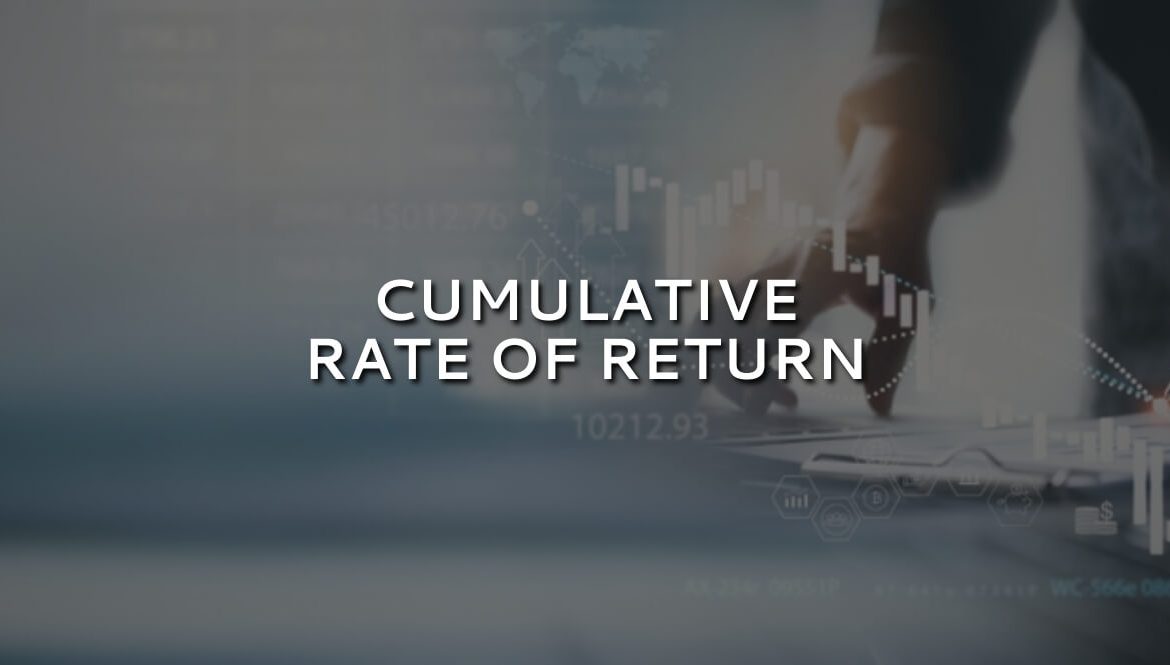What Is a Cumulative Rate Of Return, And Why Does It Matter?
Have you ever heard the term “cumulative rate of return”, but you’re still uncertain exactly what it represents? Would you like to get the detailed annualized vs cumulative rate of return comparison?
As a passionate trader eager to improve his trading skills, getting all the perks about total return, average annual return, compound interest, and much more is always useful!
Competition among traders is increasing daily. Vast experience, skills, and knowledge represent a huge advantage over others in the market. Traders can determine the total return of an investment by comparing the profit or loss to the original purchase price.
This calculation does not include dividends or interest. It allows traders to assess the success of their investment without factoring in additional income.
In this text, we will cover all the crucial information about the cumulative rate of return! Let’s get more useful information about this type of return, shall we?
The cumulative rate of return – Definition and Explanation
A cumulative return on a specific investment represents the cluster amount that particular investment managed to either obtain or lose over a specified period of time.
Remember that that amount is shown in percentages. However, the adjusted closing price makes it easy to calculate the total return on all assets. Conventional of the amount of period included.
It is manifested as a percentage. Here’s the specific mathematical formula that is responsible for getting the raw mathematical return:
Original Price of Security
(Current Price of Security)−(Original Price of Security)
Remember, this type of rate of return represents the aggregate return, not an annualized one. For example, reinvesting capital gains or dividends greatly impacts the cumulative return.
How to understand the cumulative rate of return?
As mentioned above, a cumulative return means a specific amount that a particular investment has either gained or lost ovr some time.
Traders can very quickly calculate the cumulative return of a capital that excludes dividends or interest in the following way: Knowing the amount of profit or loss over the initial asking price.
That all can be 100% effective once contributing to precious metals and non-dividend growth stocks.
Remember, using the raw closing price, you can easily calculate and evaluate cumulative returns in these cases.
What does the closing price offer?
On the other hand, the modified closing price enables a simple way to calculate the overall return on all assets. This includes holdings in dividend-paying stocks and interest-bearing bonds.
The adjusted closing price accounts for the impact of the following changes on the asset price:
Dividends
Interest
Stock splits, and other changes.
Thus, the cumulative return can be computed by using the initial adjusted closing price as the original price of the investment.
What is a good cumulative rate of return?
Regarding a good cumulative return, it’s crucial to note that for long-term stock market investments, most investors view an average yearly return of 10% or above as a respectable return.
What formula is used to get the cumulative total return?
If you’re interested in getting to know how to calculate the cumulative rate of return, here is a useful formula to do so:
Equation (1 + RA) n = 1 + RC
It is obtained by adding the cumulative rate of return, in which “n” stands for the number of years considered for calculating the rate of return (RC).
RA represents the annualized rate of return, while the RC is the cumulative rate of return.
A good example of cumulative return
If you’d like to learn more about the cumulative rate of return, it’s crucial to get a good example. We’ve provided you with the following:
Suppose that $10,000 invested in ABC Widgets Company stock yields $48,000 after ten years. In the absence of taxes and reinvested dividends that represents a 380% cumulative return.
Annualized vs cumulative rate of return – differences
If you’re eager to know what are the main differences between these two different rates of return, you should understand that annualized return stands for the return on investment that same year.
On the other hand, cumulative return represents the return on the investment in general. Here’s an example: The money earned in the primary year of an investment would become the annualized return.
Get All The Special Considerations
Once you’re about to evaluate mutual fund or ETF performance, checking if interest or dividends are included in the cumulative return is crucial.
This particular information could be useful to you, and you can find it in marketing materials or accompanying illustrations.
You can count payouts as either reinvested or added as raw dollars, affecting the calculation.
Mutual Funds vs. Stocks
Mutual funds could, without any doubt, distribute capital gains to investors. It’s able to be reinvested. However, it complicates cumulative return calculations.
This particular distribution usually happens at the end of the year. It incorporates profits from portfolio managers’ trades.
Compound Return
Unlike the cumulative return, the compound return is an annualized figure, which may seem more impressive but omits the effect of annual expenses on investor returns.
These particular expenses incorporate the following:
Fund expense ratios
Interest rates
Management fees that are all able to significantly impact cumulative returns.
Taxes
Another crucial thing to note is taxes. They can reduce cumulative returns for most investments, especially bonds with low returns and unfavourable tax treatment.
Very often, municipal bonds are tax-exempt. On the other hand, long-term stock investments enjoy relatively low capital gains tax rates.
Advertisements
Advertisements often use cumulative returns to make investments appear impressive, but these results can be exaggerated or distorted. Consider market conditions and fees when comparing returns between different investments.
Precious Metals
When evaluating precious metals investments, consider the need for more regulation and potential storage costs or insurance fees not included in the cumulative return. ETF fees also need to be deducted from returns.
Bottom line
In conclusion, the cumulative rate of return is important because it gets the best possible picture of the true return on a particular investment.
It’s the best assistant in that to numerous traders. Remember, this particular return includes reinvestments made before, not only the primary investments.
That’s why traders utilize the cumulative rate of return almost daily!
The post What Is a Cumulative Rate Of Return, And Why Does It Matter? appeared first on FinanceBrokerage.

